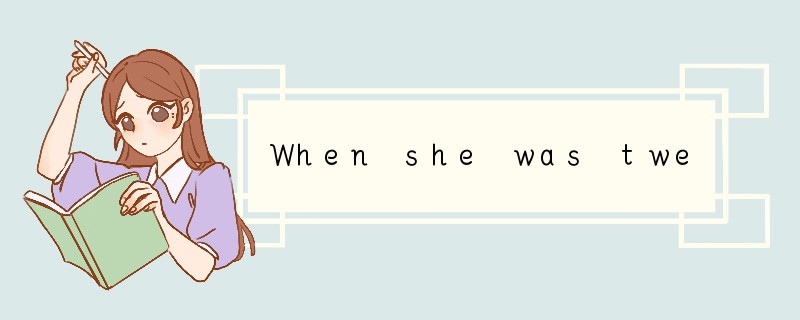When she was twelve, Maria made her first
时间:2024-03-12 14:21:47 栏目:学习方法
题目内容:
When she was twelve, Maria made her first important decision about the course of her life. She decided that she wanted to continue her education. Most girls from middle-class families chose to stay home after primary school, though some attended private Catholic "'finishing" schools. There they learned a little about music, art, needlework, and how to make polite conversation. This was not the sort of education that interested Maria or her mother. By this time, she had begun to take her studies more seriously. She read constantly and brought her books everywhere. One time she even brought her math book to the theater and tried to study in the dark.
Maria knew that she wanted to go on learning in a serious way. That meant attending the public high school, something that very few girls did. In Italy at the time, there were two types of high schools: the "classical" schools and the "technical" schools. In the classical schools, the students followed a very traditional program of studies, with courses in Latin and Greek language and literature, and Italian literature and history. The few girls who continued studying after primary school usually chose these schools.
Maria, however, wanted to attend a technical school. The technical schools were more modern than the classical schools and they offered courses in modern languages, mathematics, science, and accounting. Most people including Maria's father believed that girls would never be able to understand these subjects. Furthermore, they did not think it was proper for girls to study them.
Maria did not care if it was proper or not. Math and science were the subjects that interested her most. But before she could sign up for the technical school, she had to win her father's approval. She finally did, with her mother's help, though for many years after, there was tension in the family. Maria's father continued to oppose her plans, while her mother helped her.
In 1883, at age thirteen, Maria entered the "Regia Scuola Tecnica Michelangelo Buonarroti" in Rome. Her experience at this school is difficult for us to imagine. Though the courses included modern subjects, the teaching methods were very traditional. Learning consisted of memorizing long lists of facts and repeating them back to the teacher. Students were not supposed to ask questions or think for themselves in any way. Teachers were very demanding, discipline in the classroom was strict, and punishment was severe for those who failed to achieve or were disobedient.
小题1:In those days, most Italian girls________.
A.went to classical schools
B.went to "finishing" schools
C.did not go to high school
D.went to technical schools小题2:Maria's father probably________.
A.had very modern views about women
B.had very traditional views about women
C.had no opinion about women
D.thought women could not learn Latin小题3:High school teachers in Italy in those days were________.
A.very modern
B.very intelligent
C.quite scientific
D.quite strict小题4:We can infer from this passage that________.
A.girls usually attended private primary schools
B.only girls attended classical schools
C.girls did not like going to school
D.Maria was a girl of strong will
最佳答案:
小题1:C
小题2:B
小题3:D
小题4:D
答案解析:
文章大意:文章介绍Marie和其他当时的意大利女孩不一样,她没有选择回家而是继续接受教育,在传统学校和技术学校之间,她选择了更加严格的技术学校,在取得父亲同意的情况下,她在学校努力学习。
小题1:细节题:本题的问题是:在当时的意大利大多数女孩的选择是什么?由文中的第一段可知―Most girls from middle–class families chose to stay home after primary school ,大多数女孩不去上高中,所以本题的正确答案为C。
小题2:推理题:本题问的是:Maria 的父亲对女性的态度是什么?由文中第三段倒数第二句 ―Most people—including Maria‘s father —believed in the girls would never be able to understand these subjects.‖可以得出答案,父亲和大多数人一样都持传统观念。选B
小题3:细节题:本题的问题是:当时的意大利高中教师是怎样的?从文中最后一段可以得出结论―Teachers were very demanding, discipline in the classroom was strict, and punishment was severe for those who failed to achieve or were disobedient,可知高中老师是非常严厉的,故正确答案为D。
小题4:推理题,问题是:从全文可以得出什么样的结论?A 选项未提及。C 选项错误,原文只说大多数女孩子都选择呆在家里,并未说她们都不喜欢读书。B选项错误,原文只说就算是上学的话大多数女孩子都选择传统学校,而并非只有女孩子可以去。而从文章我们可以看出Marie是个意志力坚强的女孩,所以正确答案为D。
考点核心:
人物传记类文章的文体特征:
人物传记是记叙文体的一种,主要描写某人的生平事迹、趣闻轶事、生活背景、个性特征、成长奋斗历程等,包含记叙文的时间、地点、人物、事件等要素。其特点是以时间的先后或事件的发展为主线,空间或逻辑线索贯穿文章始终,脉络清楚,可读性较强。
版权声明:
1、本文系转载,版权归原作者所有,旨在传递信息,不代表看本站的观点和立场。
2、本站仅提供信息发布平台,不承担相关法律责任。
3、若侵犯您的版权或隐私,请联系本站管理员删除。
4、本文由会员转载自互联网,如果您是文章原创作者,请联系本站注明您的版权信息。

 订阅
订阅